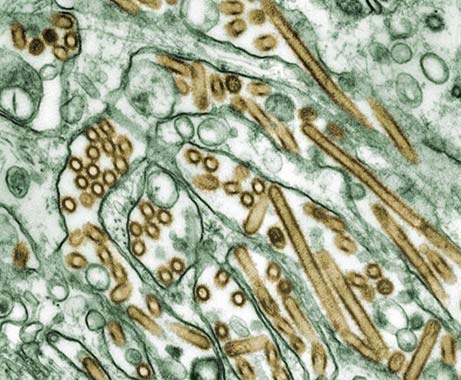Rising Concerns Over H5N1 Bird Flu as First U.S. Death Reported
The ongoing situation regarding H5N1 bird flu in the United States has escalated this week, with a reported death marking a significant development in a growing public health concern. The outbreak is notable not only for its effects on birds and livestock, particularly dairy cattle but also for its sporadic cases in humans. As health officials monitor the situation closely, the emergence of this virus poses complex challenges and raises questions about its potential implications for public health.
First Human Death from H5N1 in the U.S.
On Monday, Louisiana health officials confirmed that a patient with a severe H5N1 infection had died, marking the country’s first human fatality linked to this strain of bird flu. The Centers for Disease Control and Prevention (CDC) reported that this individual had acquired the virus through exposure to infected backyard and wild birds. H5N1 has primarily affected poultry and other birds but has demonstrated an ability to infect humans in rare cases.
As the outbreak continues, the CDC disclosed that there have been 66 documented cases of H5N1 infections in humans in the United States since the beginning of 2024. Of these, 40 cases were connected to infected dairy cows, while 23 stemmed from poultry exposure. Notably, two cases had no clear source of infection.
Seasonal Flu and Its Potential Risks
The rise of H5N1 cases coincides with an alarming surge in seasonal flu infections across the country. Health officials have raised concerns that the interplay between these two flu viruses could result in reassortment of genetic material, potentially leading to the creation of a new, more virulent strain. This scenario could complicate public health responses and increase the risk of widespread outbreaks.
WHO Assessment: Low Risk to the General Population
Despite the worrying developments, a spokesperson for the World Health Organization (WHO) has stated that the risk to the general population remains low. Margaret Harris emphasized this during a press briefing in Geneva, attributing this assessment to the absence of evidence indicating person-to-person transmission of the virus. “We are concerned, of course, but we look at the risk to the general population, and as I said, it still remains low. At the moment, we’re not seeing behavior that’s changing our risk assessment,” Harris clarified.
The WHO’s reassurances come alongside extensive monitoring of H5N1’s impact, drawing attention to crucial factors such as the virus’s transmission dynamics. Continuous surveillance will be necessary to detect any potential shifts in spread patterns that could alter the risk landscape.
Public Health Preparedness and Response Strategy
In light of these developments, public health officials are calling for heightened vigilance and preparedness. Measures such as increased testing and monitoring of livestock and wildlife are being implemented to prevent further transmission of H5N1. The CDC has reiterated the importance of biosecurity in agricultural practices to protect both human and animal health.
Education and awareness programs are being emphasized for communities at risk, particularly those directly involved in poultry and livestock farming. The CDC supports these efforts, noting that proactive measures can greatly reduce risk factors associated with the virus.
Conclusion: Navigating an Evolving Health Challenge
The confirmed death from H5N1 in Louisiana underscores the serious nature of this evolving health challenge. While the immediate risk to the general public is deemed low, the potential for genetic reassortment between H5N1 and seasonal flu viruses remains a pressing concern. This ongoing situation requires continuous observation and a coordinated response from health authorities at local, national, and international levels.
With the intersection of animal health, human health, and environmental factors at play, addressing the H5N1 outbreak is critical. The developments in the coming weeks will be crucial in determining the trajectory of this virus and its impact on public health strategies. As vigilance and preventive measures are ramped up, the health community remains focused on ensuring that this situation does not escalate further.









